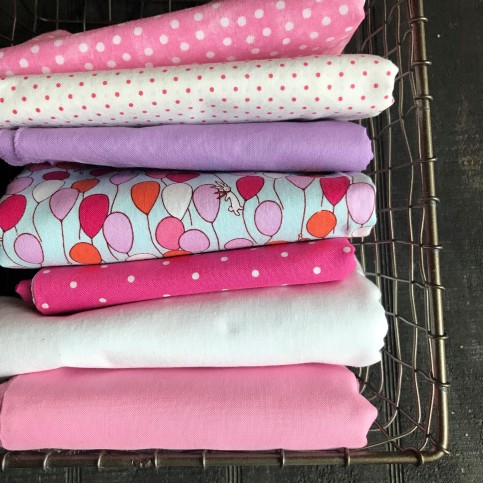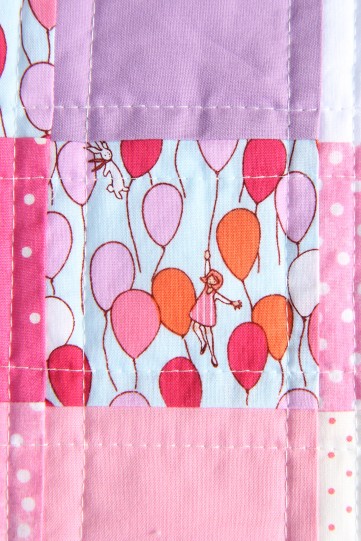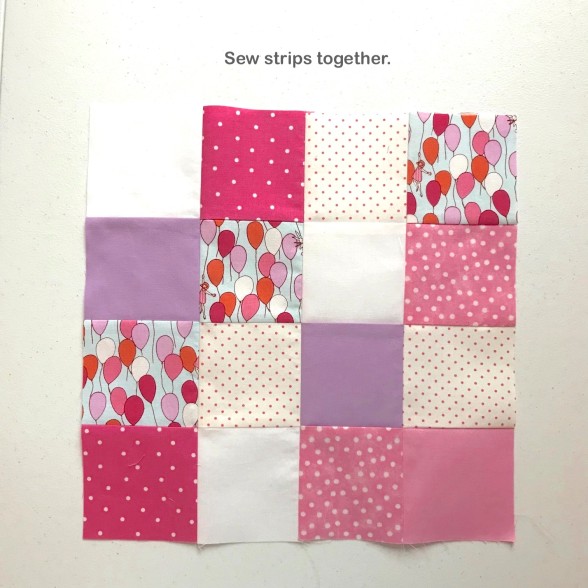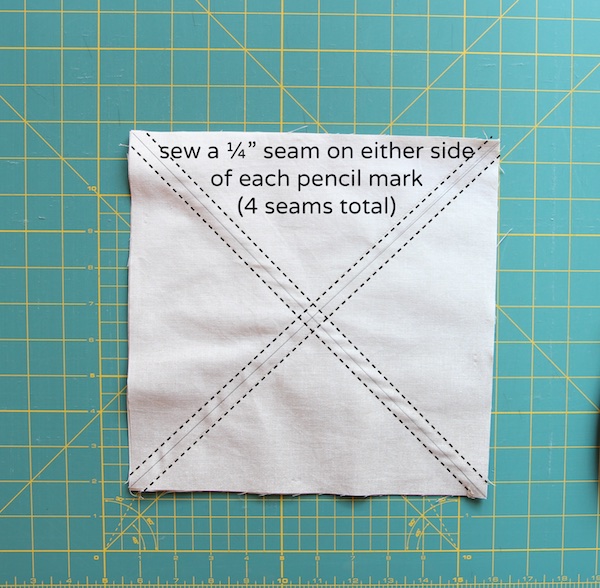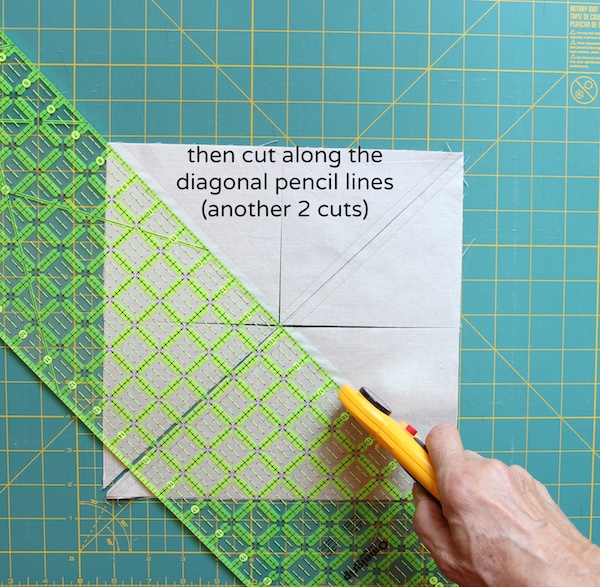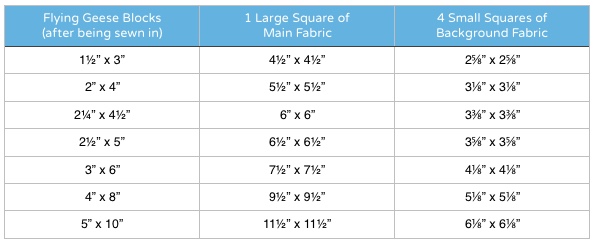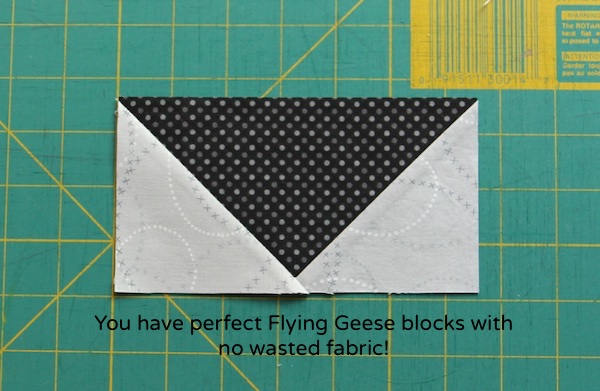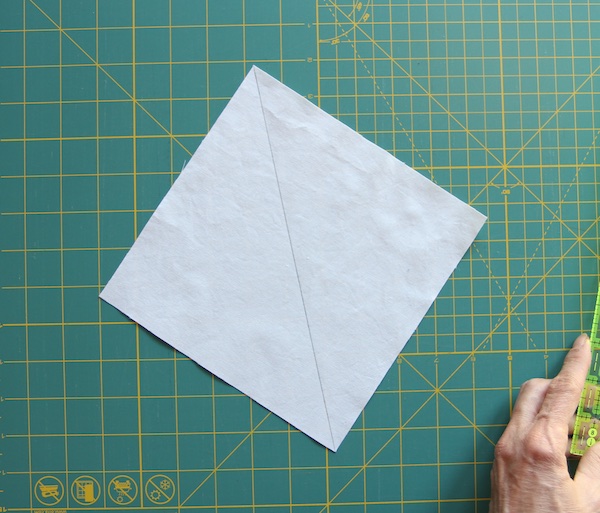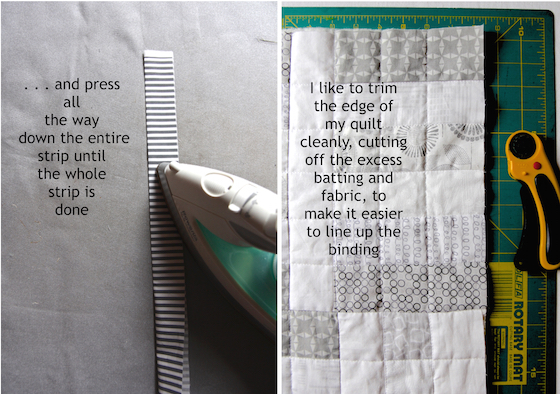
I found this really interesting line from Windham Fabrics called “Measure”. They have fabrics that show compasses and rulers and writing and I just loved it. I had been looking for a color palette of browns, creams and maybe a touch of black. This fabric line was perfect for the 16-patch quilt I had in mind.
I’m also going to show you how I made the 16-patch blocks and give you my measurements for cutting.

I added some Kona solids and another text print called “Bee Creative” by Deb Strain for Moda. For the background, I used Kona Ivory. The finished quilt size is 48″ x 60″, which I consider an ideal size for a throw quilt to curl up with on the sofa.

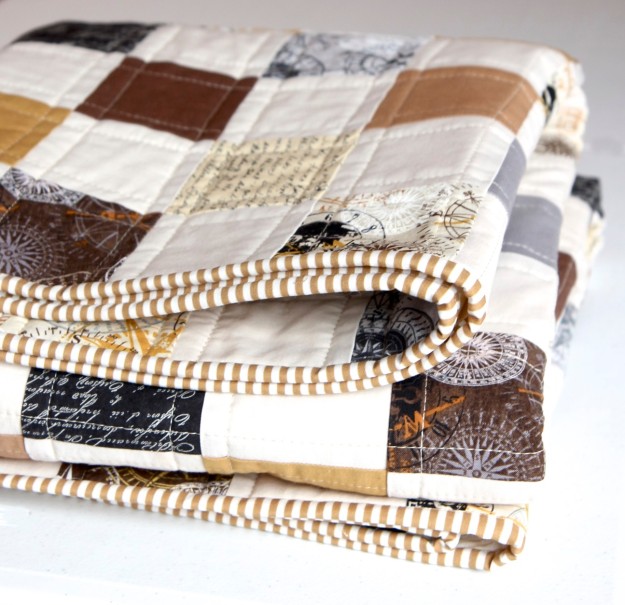
This quilt was composed of twenty 16-patch blocks. The squares in the finished quilt are 3″. The 16-patch blocks in the finished quilt are 12″. I prewash all my fabrics – if there are any surprises, I want them now and not when I wash the finished quilt.

If you are interested in some of the particulars, here’s what I did:
I cut (40) 3.5″ WOF strips total, 20 in the various prints and 20 in the background fabric. You need 2 yards of the background fabric and 2 yards of various prints.
I cut the WOF strips into 15″ strips. I sewed 2 prints and 2 background strips together, like this:

Press seams to dark sides. This strip set gets subcut into (4) 3.5″ sections:

Repeat with your other prints, varying which fabrics you have in the top and third positions, so you have a great variety.

Then lay these out into 16-patch blocks, starting with a dark fabric in the top left position.

Sew together into blocks. The seams should all nest.

Repeat until you have 20 16-patch blocks and then just lay all the blocks in a pleasing array – four blocks across, five blocks down, and sew together.
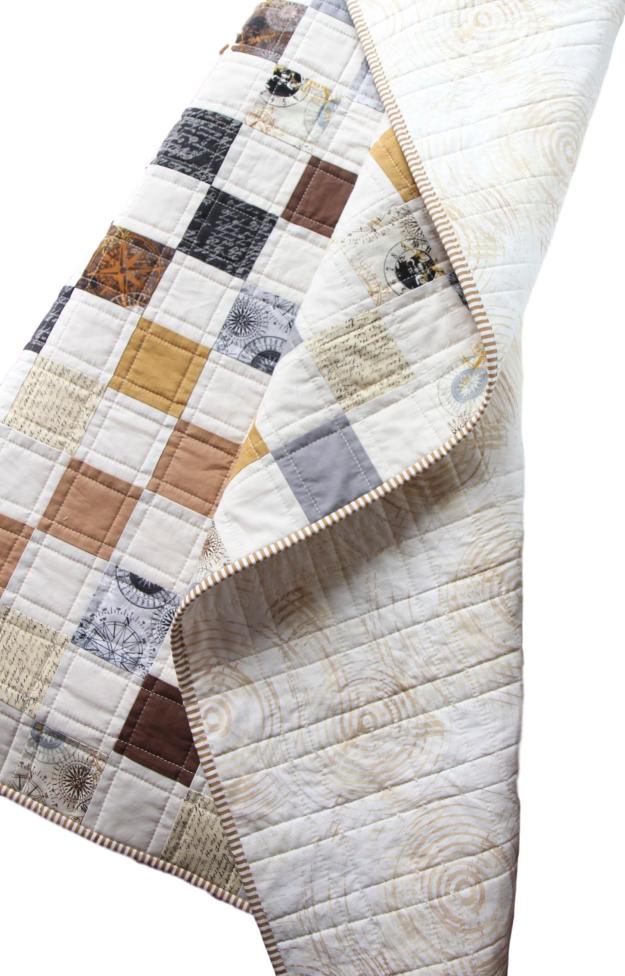
I used a fabric for the backing called “Henry Glass Principle Circle Play in Cream“. It is a 108″ wide quiltback which is terrific – no piecing of the back! There seems to be more 108″ wideback fabrics available now than there used to be.


I used my new favorite quilt batting, Quilter’s Dream in the Supreme loft. I love this batting – it’s more expensive, but it makes a heftier, cozier and softer quilt than Warm and Natural.

I quilted this using a 4.5″ stitch length and used Aurifil 40# cotton thread.
For the binding, I did go with a classic stripe. Hawthorne Threads actually digitally prints lots of really interesting fabrics themselves and they do a whole line of stripes called “Dress Stripes” that are perfect for bindings – if you can’t find the color you want for stripes, check them out – they have almost any color you need. I used “Ochre” for this binding.


I cut 2.5″ strips for the binding. I have a tutorial on how to machine bind a quilt, if you need to know how to do that. I do use a walking foot when I attach the binding.


And here is the quilt after I washed it. I definitely wanted that crinkle look for this one:

Can’t wait to send this off to its new owner!
Thanks for stopping by. Hope you’re making something!
Elaine



